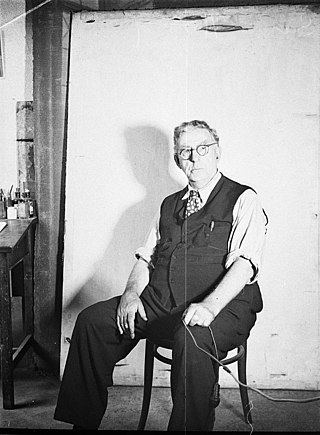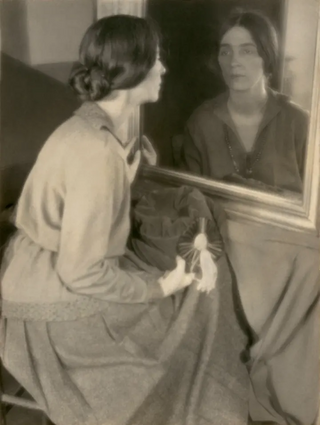
A photographer is a person who makes photographs.

Photojournalism is journalism that uses images to tell a news story. It usually only refers to still images, but can also refer to video used in broadcast journalism. Photojournalism is distinguished from other close branches of photography by having a rigid ethical framework which demands an honest but impartial approach that tells a story in strictly journalistic terms. Photojournalists contribute to the news media, and help communities connect with one other. They must be well-informed and knowledgeable, and are able to deliver news in a creative manner that is both informative and entertaining.

Street photography is photography conducted for art or inquiry that features unmediated chance encounters and random incidents within public places, usually with the aim of capturing images at a decisive or poignant moment by careful framing and timing. Although there is a difference between street and candid photography, it is usually subtle with most street photography being candid in nature and some candid photography being classifiable as street photography. Street photography does not necessitate the presence of a street or even the urban environment. Though people usually feature directly, street photography might be absent of people and can be of an object or environment where the image projects a decidedly human character in facsimile or aesthetic.

Candid photography is photography captured without creating a posed appearance. This style is also called street photography, spontaneous photography or snap shooting. Professional photographers sometimes shoot candid photos of strangers on the street or in other public places such as parks and beaches. Candid photography captures natural expressions and moments that might not be possible to reproduce in a studio or posed photo shoot. This style of photography is most often used to capture people in their natural state without them noticing the camera. The main focus is on capturing the candid expressions and moments of life. Candid photography can be used in a variety of settings such as family gatherings, special events, and everyday street scenes. It is also a popular choice for wedding photos and professional portraits. Candid photography is often seen as a more honest representation of the subject than posed photography. To capture candid photos, the photographer may need to observe the subject from a distance or use a long lens or telephoto zoom lens. This allows for capturing the subject in their natural environment without them being aware of the camera. The photographer may need to be quick and have an eye for interesting compositions and backgrounds.

A snapshot is a photograph that is "shot" spontaneously and quickly, most often without artistic or journalistic intent and usually made with a relatively cheap and compact camera.

Laura Gilpin was an American photographer.

Wedding photography is a specialty in photography that is primarily focused on the photography of events and activities relating to weddings. It may include other types of portrait photography of the couple before the official wedding day, such as a pre-wedding engagement session. On the wedding day, the photographer(s) will provide portrait photography as well as documentary photography to document the different wedding events and rituals throughout the wedding day(s).

Travel photography is a genre of photography that may involve the documentation of an area's landscape, people, cultures, customs, and history. The Photographic Society of America defines a travel photo as an image that expresses the feeling of a time and place, portrays a land, its people, or a culture in its natural state, and has no geographical limitations.
Gen Ōtsuka was a renowned Japanese photographer.

Alfred Gescheidt was an American photographer. He specialized in photomontage, and worked primarily in commercial and advertising photography.
John Raymond Garrett is an Australian/British photo journalist whose work is mainly on fashion, reportage and photojournalism. He has covered situations and exhibited widely and is the author of many books.

Samuel John Hood was an Australian photographer and photojournalist born in South Australia whose career spanned from the 1880s to the 1950s.
Nacho López was an important figure in the photojournalism of Mexico in the 20th century. Unlike the current of the time, he mostly rejected the creation of images that made Mexico exotic and preferred the photographing of the common people of Mexico City over that of the country's political and social elite. He is credited for being the first in Mexico to work on photographic series, which he called “photo-essays” meant for publication in weekly pictorial magazines in the country. About half of his photographs were events staged by López designed to capture the reactions of bystanders. Although he was an active photojournalist for less than a decade in the 1950s, he was influential to the generations of photojournalists that followed him, with a collection of about 33,000 images now at the federal photograph archive in Pachuca, Hidalgo.

Margaret Watkins (1884–1969) was a Canadian photographer who is remembered for her innovative contributions to advertising photography. She lived a life of rebellion, rejection of tradition, and individual heroism; she never married, she was a successful career woman in a time when women stayed at home, and she exhibited eroticism and feminism in her art and writing.
Johnson Donatus Aihumekeokhai Ojeikere, known as J.D. 'Okhai Ojeikere, was a Nigerian photographer known for his work with unique hairstyles found in Nigeria.
Barbara DuMetz is an American photographer and pioneer in the field of commercial photography. She began working in Los Angeles as a commercial photographer in the 1970s, when very few women had established and maintained successful careers in the field, especially African-American women. Over the course of her career, "she made a major contribution to diversifying the landscape of images that defined pop culture in the United States."
Clarence J. Williams is an American photojournalist who worked for the Los Angeles Times from 1996 to 2003. He won the Pulitzer Prize in 1998 for feature photography.
The tradition of photography started in the 19th century in Vietnam and has since then given rise to modern photography and photojournalism into the 20th century.

Photographs have been taken in the area now known as Canada since 1839, by both amateurs and professionals. In the 19th century, commercial photography focussed on portraiture. But professional photographers were also involved in political and anthropological projects: they were brought along on expeditions to Western Canada and were engaged to document Indigenous peoples in Canada by government agencies.












